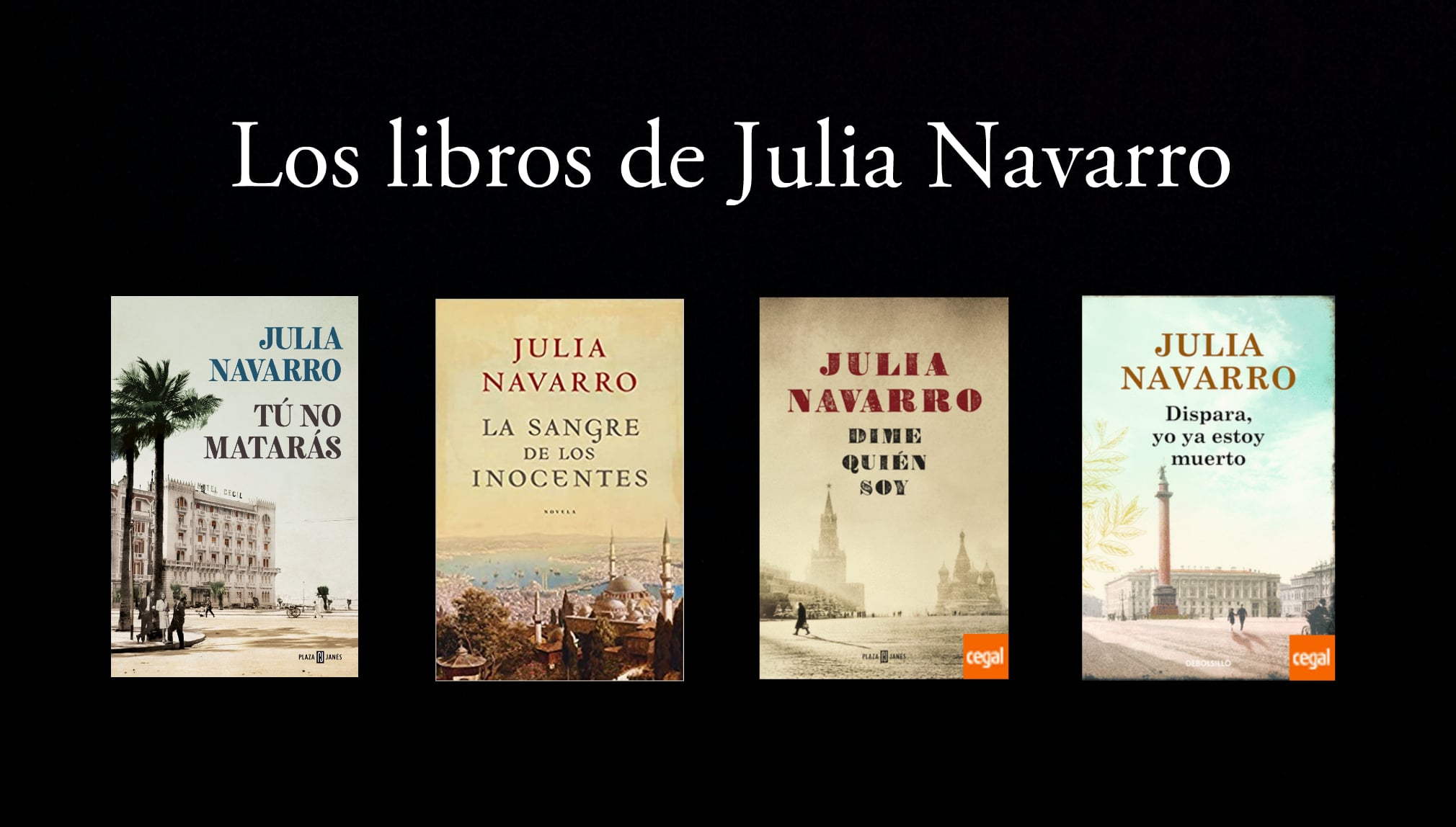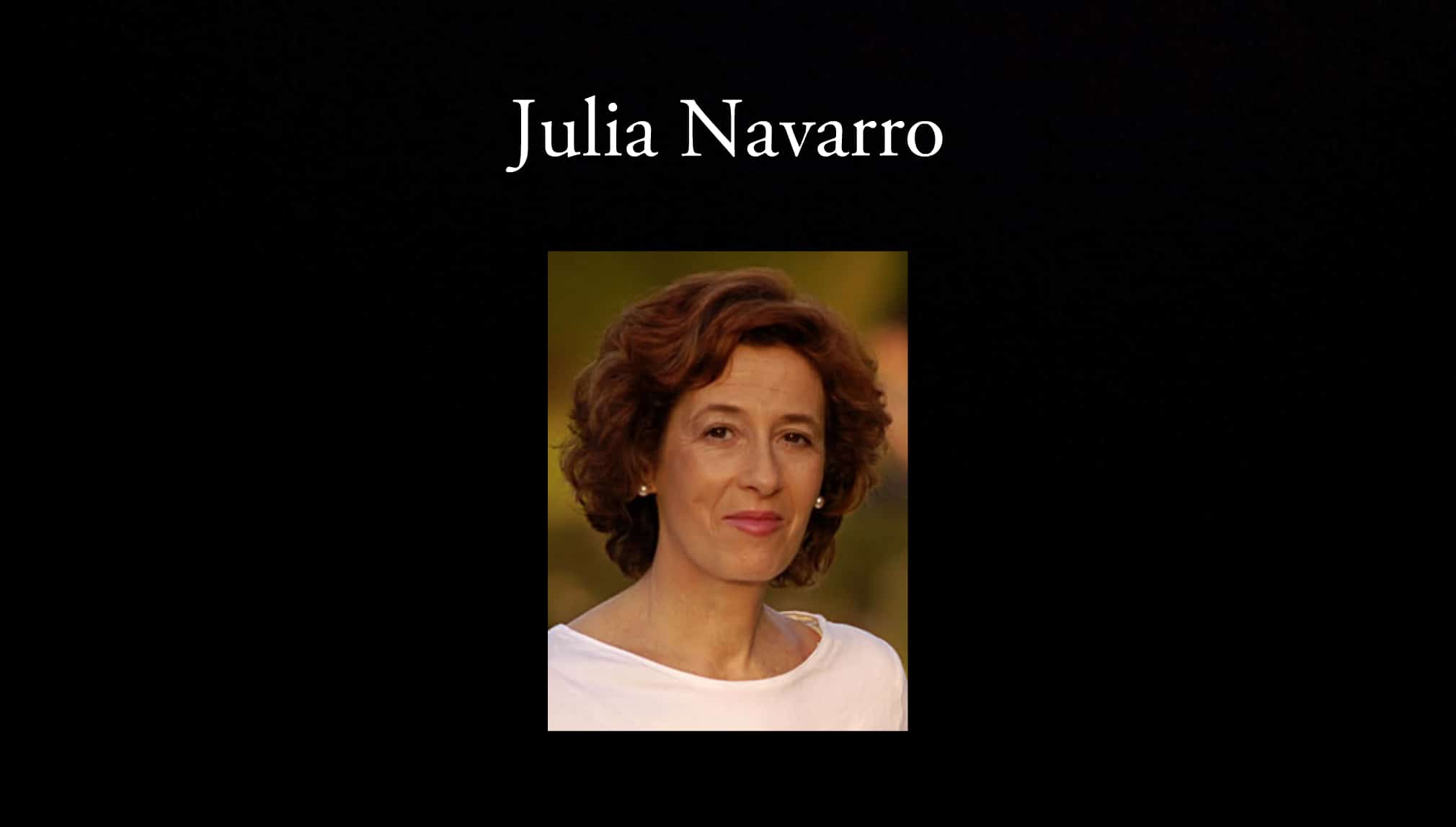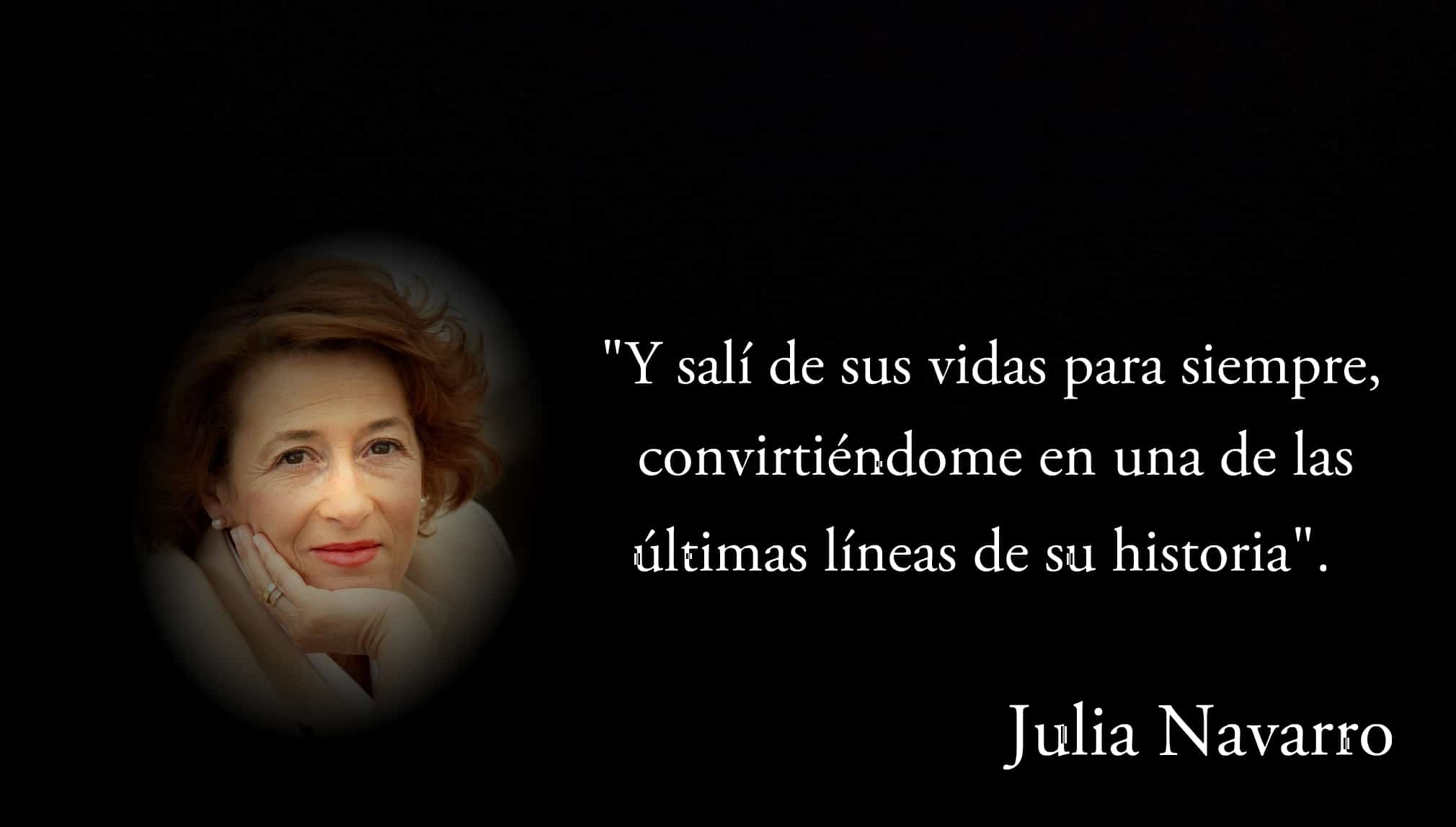
Julia Navarro's books.
Julia Navarro's books are a "boom" on the web. This is not strange, we are facing one of the most outstanding authors of contemporary Spanish literature. She is also recognized for her extensive career in journalism; During his 35-year career he worked for very prestigious communication companies in Spain. Among them, Cadena SER, Cadena Cope, TVE, Telecinco and Europa Press.
Most of Julia Navarro's books are derived from her journalistic investigations. For this reason, columnists such as David Yagüe from XX centuries (2018), debate whether their works fit within the genre of the historical novel. In this regard, the Madrid writer stated: “I write the stories I want to write. I have an idea and I am working on it. But at that moment I don't think about the readers, but only about what I want to tell ».
Bibliographic synthesis of Julia Navarro
Personal life
Born in Madrid (1953), Julia Navarro has repeatedly confessed that her dream was to be a dancer. He even studied ballet until he was 17 years old, but finally he followed in the footsteps of his father, the journalist Fernando Navarro. Yale. He married after completing his university education with his colleague, Fermín Bocos, on April 16, 1983, with whom he has a daughter.
Literary career
His beginnings in journalistic investigation coincided with the Spanish Transition stage. In the same way, Navarro ventured into literature through various journalistic essays until the publication of his first novel in 1997, The Brotherhood of the Holy Shroud. This book would eventually rank among the best sellers in Europe and was translated into several languages.
Navarro explained in an interview with José Fajardo of El Mundo (February 2018) how its literary genesis happened:
"It was a coincidence: that novel was inspired by a story that I read precisely in this newspaper, the obituary of the scientist Walter McCrone, who had investigated the Shroud of Turin. The controversy about whether it was true or false lit the lightbulb for me. He had already published books on politics and essays, but he wasn't sure if publishers would like them. I was the first surprised to see the huge reception it had".
Journalistic books
- We, the transition (1995)
- 1982 - 1996, between Felipe and Aznar (1996)
- The left that comes (1998)
- Madam president (1999)
- The new socialism, the vision of José Luis Rodríguez Zapatero (2001)
Julia Navarro novels
Apart from The Brotherhood of the Holy Shroud (1997), the list of novels by Julia Navarro is completed with the following titles:
- The clay bible (2005)
- The blood of the innocents (2007)
- Tell me who I am (2010)
- Fire, I am already dead (2013)
- Story of a scoundrel (2016)
- You will not kill (2018)
The Brotherhood of the Holy Shroud (1997)
The city of Turin is rocked by a series of fires. Then, Marco Valoni (a prominent professor of Art History) suspects that it is a plot to steal the Holy Shroud. The professor is accompanied by his friends Piedro, Giuseppe, Antonio, Sofía and Minerva. Then, in parallel, Ana, an attractive journalist obsessed with events related to fires, appears.

Julie Navarro.
Meta
In this novel, Julia Navarro demonstrates her extensive knowledge of religious matters. The passages referring to sickly kings, knights, rulers fallen in disgrace, servants, and commoners are particularly interesting and well-crafted. The great merit of the writer is in the hook generated despite the density of information handled.
The narrative runs in a circular fashion, with events from the past explained in parallel with the action of the present. The author mixes fiction with a fairly fluid and dynamic dark story style throughout the 526 pages of the book. Where suspicions, intrigue, death and unexpected turns are not lacking, especially at the end.
The clay bible (2005)
The story centers on the discoveries announced by Clara Tannenberg in the framework of an archeology congress. The statement in question deals with the discovery - on a scientific basis - of the tablets of the patriarch Abraham. Their content would reveal very important passages about Divine Creation, the events at Babel and the Universal Flood.
Tannenberg wants to continue the excavations to expand the investigation, but it will not be easy. In the first place, the dark past of his powerful grandfather, which always undermines the prestige of the family. For this reason, several people appear willing to kill her for revenge. Further, the historical context of World War II and the constant threat of art dealers further complicate the picture.
Narrative structure
The novel is composed of three interlocking parts. The first is an inquisitor's account of the events of the Cathar Crusade. The study of the chronicles of the inquisitor by Professor Arnaud in the middle of Nazi Germany are the object of the second part. Finally, an organization with radical features very similar to al-Qaeda and the Islamic State enters the scene, whose objective is to achieve Muslim fundamentalism.
According to Julián Pérez Porto, from the portal Poems of the Soul (2020), “it is undeniable that this book is a clear example of fiction with a load. This is not the typical best sellers that uses a series of hackneyed resources and in which the theme is a simple excuse to present us with an entertaining adventure ”. Likewise, most of the book's reviews describe Navarro's position in relation to the threat of radical Islamism to the West.
Tell me who I am (2010)
A wealthy woman contacts the Madrid journalist Guillermo Albi in order to clarify the past of her great-grandmother, Amelia Garayoa. At first, it is only known that she separated from her husband and son when she fled with a French communist on the eve of the Spanish civil war. As the journalist travels through different countries conducting revealing interviews, a past full of love, persecution and espionage would be revealed.
Historic context
At the beginning, Amalia's life refers to the Russian Revolution of 1917. Then the action moves to the Spanish Civil War (1936-1939). Later, the Night of Broken Glass is mentioned when the Nazis attacked countless synagogues (1572), shops (7000) and Jewish cemeteries. Also, an analepsis is made of the consequences of the Great War after the death of the Archduke of the Austro-Hungarian Empire.
In the same way, the espionage plots during the world wars and later in the Cold War are described. Navarro ruthlessly exposes the torture committed by the USSR, as well as the hardships of the concentration camps for women. Finally, there is talk of the Fall of the Berlin Wall and German reunification.
Fire, I am already dead (2013)
This work delves into the generational stories about the Zaid families, of Palestinian descent, and Zucker, of Hebrew origin. Miriam Miller, a young NGO worker, is in charge of recounting the events surrounding the Zaid. For this reason, he travels to Jerusalem in order to gather information on the settlements.
There, he meets with Ezekiel Zucker, a wealthy old Hebrew man, who is the parent of the person Miller really wants to find. Then, the Israeli recalls the events of his family, including events related to the Holocaust and the relocation of German Jews. In this way, the narrative unfolds with intertwined stories in the midst of a historical conflict that causes tragedy and suffering on both sides.

Quote by Julia Navarro.
Review
En Fire, I am already dead, Navarro exposes in the most objective way possible many of the aspects concerning the Israeli-Palestinian conflict. It presents two families linked by affection, but with the constant shadow of estrangement due to ethnic and cultural heritage. Where friendship is an immeasurable treasure capable of overcoming intolerances caused by religion and politics.
The story of a scoundrel (2016)
Thomas Spencer is an American ashamed of his Hispanic ancestry in constant conflict with his close relatives. Consequently, he develops pathological behavior very dangerous for himself and those around him. Finally, unsuspected levels of evil are reached at the beginning, although logical if the course of events is followed.
In this novel, Navarro modifies his usual narrative style and frequently introduces the protagonist's conflicting thoughts around the same idea.. As the evil is exposed, the story unfolds in different cities of England, the United States and Spain. With the passing of events, the reader ends up becoming a bloodthirsty accomplice, connoisseur of Spencer's nature.
Analysis of You will not kill (2018)
The story centers on a group of friends —Fernando, Marvin, Catalina and Eulogio— eager to get away from a Spain in full swing of Francoism. When the Iberian country was immersed in a kind of parallel universe after the Second World War.
The adventure of the comrades takes them to different places throughout the planet, however, there is always a link between them. This invisible and powerful link gives rise to unexpected turns that keep the uncertainty until the last lines of the text. It is a reflective work, where the reader is confronted with the nature — contemplative or active — of his own existence.
Julia Navarro Awards
Julia Navarro has professed her admiration for the writing of Tolstoy and Balzac on several occasions. From there, his tendency to elaborate characters capable of describing some historical period, as well as the costumbrista component of his narrative, is understood. Although the Madrid writer has never applied for a literary contest, her readers have made her the recipient of several awards. Here are a few:
- Quéleer Award for the best Spanish novel of 2004 for The Brotherhood of the Holy Shroud.
- Silver Pen Award from the Bilbao Book Fair 2005.
- 2005 Crisol Bookstores Readers Award.
- More Music than Books Award 2006.
- CEDRO 2018 Award.